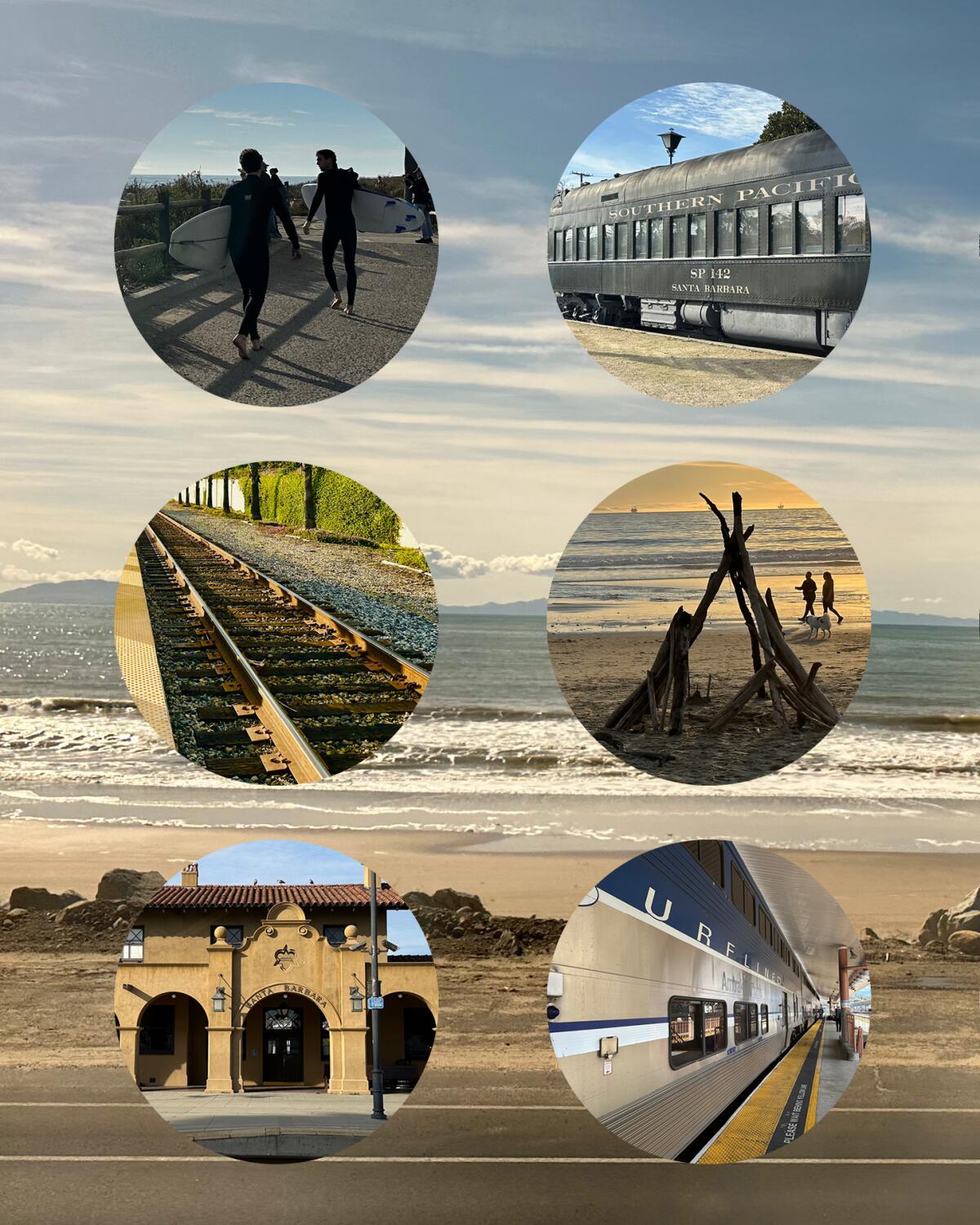
7 epic day trips you can take by train from Union Station
Unpopular opinion: The train is the best mode of vacation transportation.
I’ll take the ease of ticket purchasing, relaxed atmosphere in the stations and breathtaking scenery of train travel over the stress of flying and angst of driving any day. I’ve ridden the train up and down the Southern California coast, taken the three-day Amtrak journey from L.A. to Seattle (twice!), spent a couple of days in a scenic car over the Canadian Rockies and traveled by rail in Europe and Japan. My observation is that people are just nicer when they’re traveling by train — except for that one guy who glared at me when my coffee splashed near him as we went over a particularly bumpy bridge in Oregon.
Planning your weekend?
Stay up to date on the best things to do, see and eat in L.A.
Dennis Mukai, an artist who lives in Ojai and travels frequently to San Juan Capistrano, San Diego and San Luis Obispo, started taking the train in 2018 when the horrific Montecito mudslides closed the 101 Freeway. “It’s now been six years,” he said. “ I rarely opt to drive as the train gives me the opportunity to read, catch up on my work or catch up on sleep.”
Taking a day trip via Amtrak is a great way to get a taste of train travel without committing to a multiday trip. In this guide, I highlight seven trips that start at Union Station, take three hours or less each way and have plenty of fun things to do within walking distance of the stations.
First, some travel tips:
- Make your time at Union Station part of your itinerary. There’s nothing like walking through the majestic entrance and halls to experience all the romanticism of train travel. You can even kick off your trip at with a celebratory Bloody Mary at classic restaurant and bar Traxx. There are several parking options. Lot B, which is right in front of the entrance, usually has plenty of open spots and is $16 for the entire day. Other lots will get you closer to the tracks, but you’ll miss out on walking through the beautiful lobby.
- You might consider upgrading to business class, as the price difference is not that significant (a recent search for a fare from L.A. to Santa Barbara was only $16 more than coach). The upsell will get you benefits such as priority boarding, less crowded cars, more leg room, a dedicated attendant, complimentary drinks and coffee and a surprisingly substantial snack box (mine had crackers, cheese, hummus, dried fruit, a beef stick and brownie crisps).
- You can bring your own food on the train — unlike with air travel, no one will throw out your $20 smoothie. There’s also the Market Café on the Pacific Surfliner, which sells snacks, light meals and beverages including coffee, beer and wine.
If you’re hoping to catch the most stunning scenery, where you sit makes a difference. If you’re heading north of L.A., try to snag a seat on the left side of the train. After leaving Union Station, you’ll roll through city stops like Glendale, and the Bob Hope Airport, and then start seeing some lush valley and agricultural views. After that, you’ll ride through the tunnels of the Santa Susana Pass and get a glimpse of the craggy rock formations in Chatsworth. Once you hit Oxnard, you’ll be in for some breathtaking vistas of the Pacific Ocean and beaches.
Heading south, a seat on the right side of the train will get you some great views once you pass San Juan Capistrano. Up until this point you’ll be inland and rolling through city stops, but some of the stations are beautiful and should be noted. You might recognize the massive Mediterranean-style station in Santa Ana from the TV series “True Detective” and the movie “Rain Man,” and the stop at the Anaheim station gives you a perfect view of Anaheim Stadium. After San Juan Capistrano, you’ll be treated to gorgeous views of the Pacific Ocean and beaches, and destinations for future trips, like the San Clemente Pier.
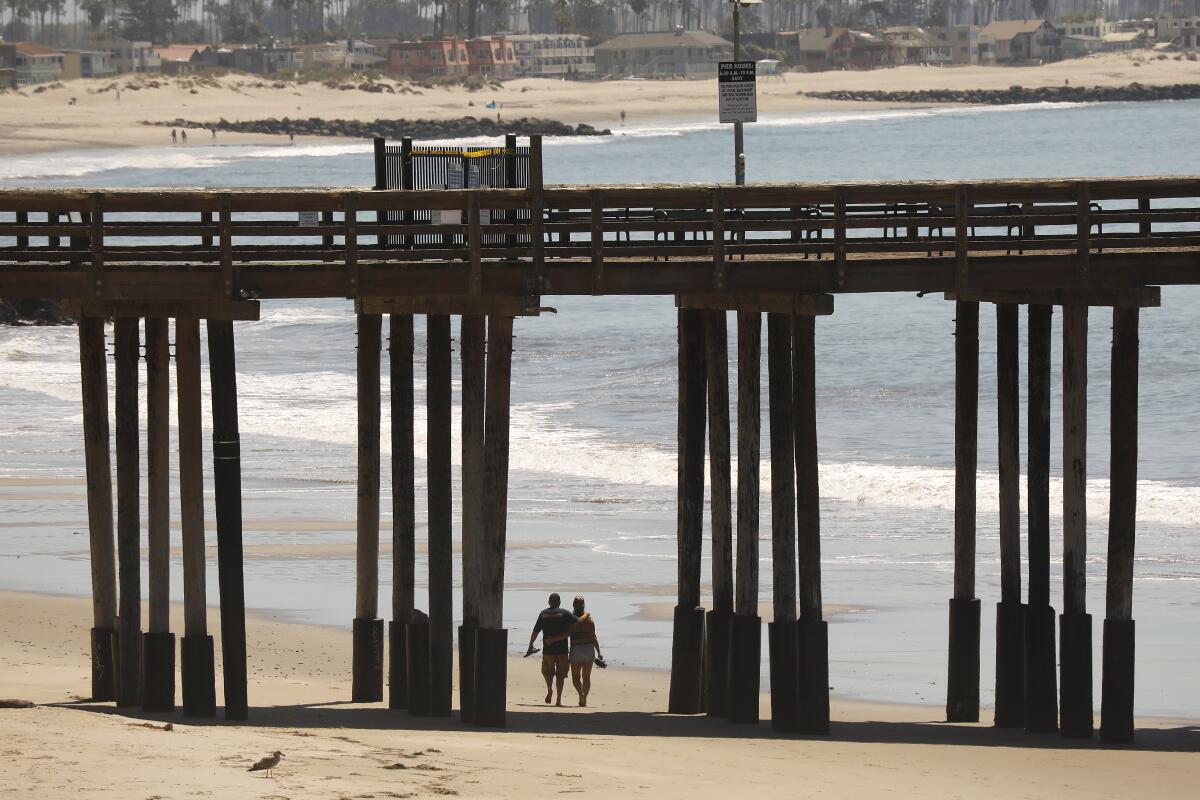
Ventura
Once considered by Angelenos as simply a place to pass through on the drive to Santa Barbara, Ventura is a worthy escape in itself. In addition to its sprawling beaches that have long been popular for surfing (the waves at Surfers’ Point are renowned), windsurfing, fishing and biking along, the city has a charming and highly walkable downtown — several blocks of historic downtown Main Street has been closed to cars since the pandemic.
A 10-minute walk from the train station gets you to downtown, where you can grab a beer at one of many breweries, including Topa Topa Brewing Co., or satisfy your yakitori craving at Gotetsu. Ventura also has a rich arts culture, and if you’re lucky to be visiting on the first Friday of the month — and you don’t mind a 15-to-20-minute walk — you can see the work and meet the artists of Bell Arts Factory, a nonprofit community center that’s home to more than 30 local artist studios.
To truly take in the scenery of Ventura and its surrounding areas, you might want to bring your bike along on your trip (see rules for transporting a bicycle on the train here) and ride the popular Ventura to Ojai bike route.
The city is also home to the nearly 150-year-old Ventura County Fair, which runs this summer from July 31 to August 11. Conveniently, the train station is practically inside the fairgrounds parking lot, so taking Amtrak would be a great way to avoid the hassles you’d encounter by driving in.
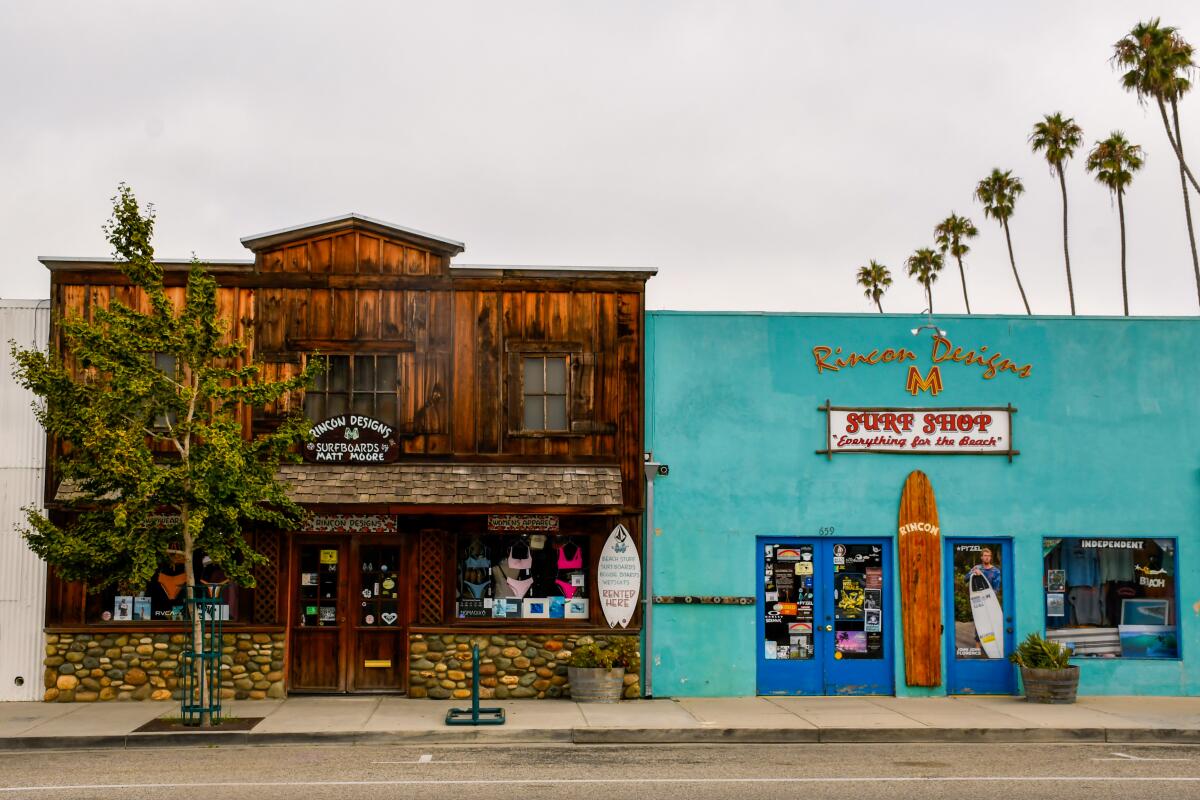
Carpinteria
“Carp” as it’s known to locals, is a sweet beach community with an eclectic collection of restaurants and shops. It’s small — the city covers just 2.6 square miles of land and its population has hovered at around 13,000 for decades — which adds to its charm and chill vibe. Times travel writer Christopher Reynolds called it “one of California’s last great beach towns.”
Carpinteria is a mecca for surfers; Rincon Point State Beach is one of most popular surf spots in California and is where the annual Rincon Classic Surf Competition takes place every year. The city is also home to Rincon Designs, the must-visit shop run by surf legend Matt Moore.
The train station is located right on town’s main street, Linden Avenue, which makes for an easy walk to the beach or to grab a bite to eat. You’ll often find locals at Esau’s Cafe, known for its big breakfasts, or sipping Americanos up the street and around the corner at Lucky LLama Coffee. Directly across the street from the station is Island Brewing Company, a dog-friendly microbrewery that’s popular with beer enthusiasts and features live music. (Yes, you can bring your pet on an Amtrak train with a reservation and fee.) Finally, spend the rest of your day trip budget at Laughing Buddha Thrift, an indoor/outdoor shopping experience that will suck you in and might make you miss your train home.
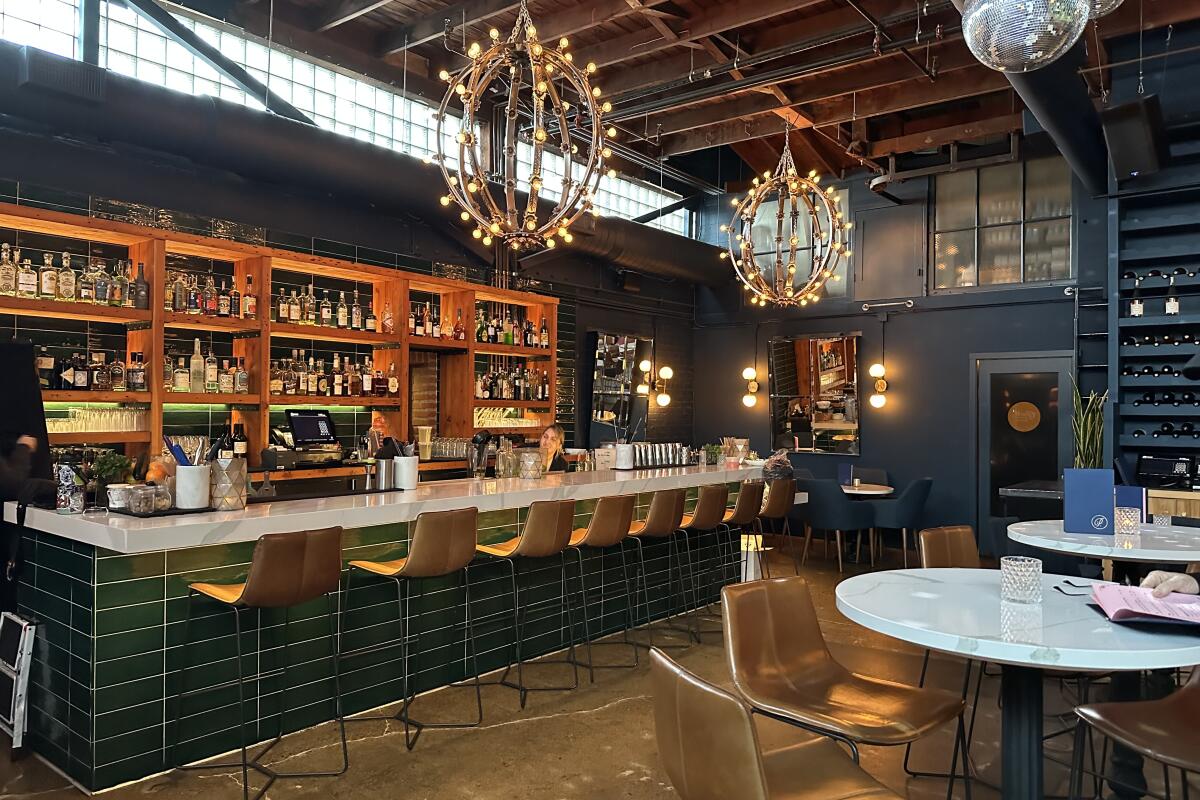
Santa Barbara
Known for its sprawling beaches and iconic architecture that pays homage to its Spanish colonial heritage, Santa Barbara has long been a favorite destination for Southern California residents.
Many of us first became familiar with it as a college town for students of the University of California at Santa Barbara (even though the school is technically in the city of Goleta). Santa Barbara’s main train station also happens to be one of my favorites; built in 1902, it’s designated as an official city landmark and its wooden ticket booths and benches and hulking metal light fixtures will transport you back in time — you’ll swear you’re hearing the echoes of someone yelling, “All aboard!” in an old-timey voice.
The Funk Zone, an area next to the Amtrak station that’s bustling with boutique wine and beer tasting rooms, cafes, galleries and shops, has become one of the city’s most-visited spots. Relax with a nice rosé at Santa Barbara Wine Collective, a martini at the elegant Pearl Social or dine on the patio of Shalhoob, a favorite of local foodies. Across the street from the station is MOXI, The Wolf Museum of Exploration + Innovation that merges science, technology and arts through interactive exhibits. Or, if you want to broaden your exploring, hop on the Santa Barbara Trolley Tour that will take you on a 90-minute tour to popular spots including the Santa Barbara Zoo, Museum of Natural History and the historic Santa Barbara Mission.
Of course, you can’t leave Santa Barbara without seeing the ocean, so take a short walk to a long pier and check out historic Stearns Wharf that’s home to a collection of nostalgic shops, restaurants and the Santa Barbara Museum of Natural History’s Sea Center.
Note: When booking your trip to Santa Barbara, you may have a choice between the Pacific Surfliner and the Coast Starlight. The Coast Starlight is an overnight, long-distance train that travels between Los Angeles and Seattle. It offers the benefit of a traditional dining car and a Sightseer Lounge (a car with floor-to-ceiling windows), but ticket prices are often at least $20 higher.
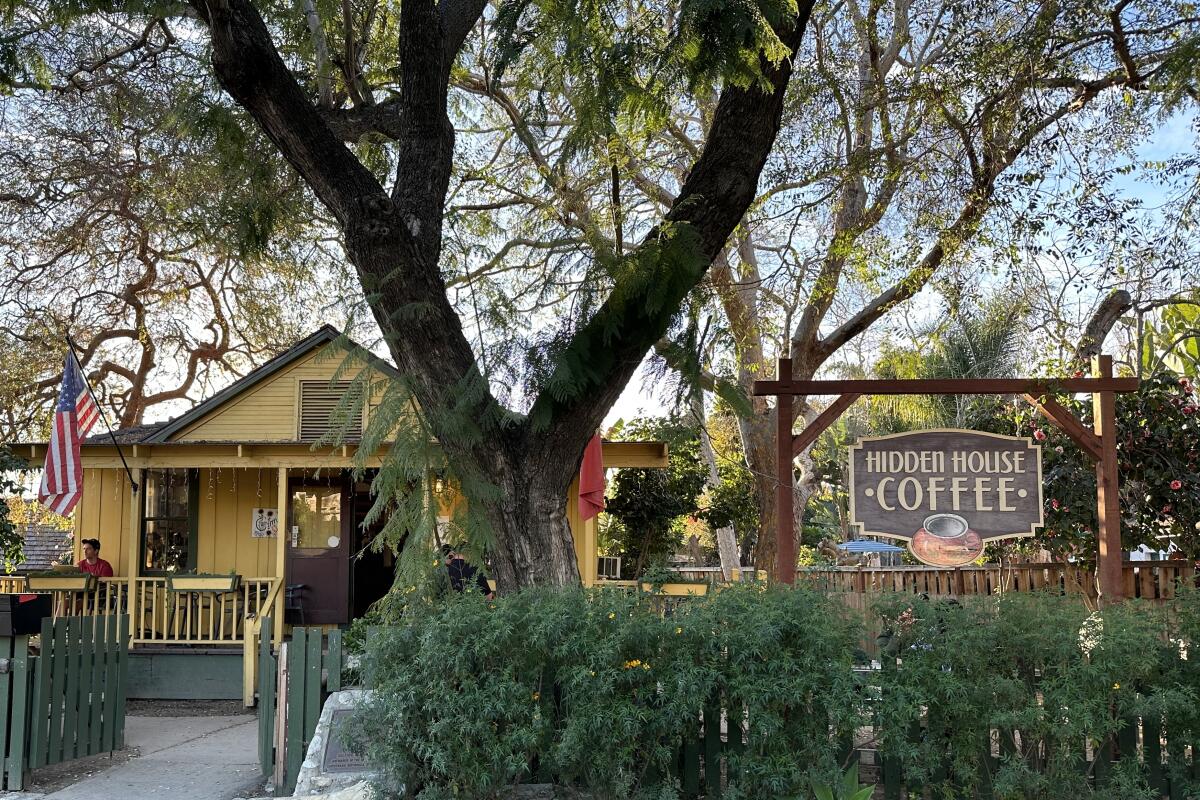
San Juan Capistrano
This beautiful small town, founded by the Spanish in 1776, is known for the Mission San Juan Capistrano and the swallows that make an annual return to the mission every spring. And it’s simply a charming to place to roam. Part of the draw is the Los Rios Historic District, considered the oldest neighborhood in California and site of three original adobe structures from the 1700s and early 1800s.
The area is just across the tracks from the train station. Make it your first stop to grab a coffee and a croissant at Hidden House Coffee (located in an old, sort of hidden house) and then meander down Los Rios Street to browse, get a psychic reading, or stop in for a cuppa at the delightful The Tea House On Los Rios. There’s even a petting zoo nearby at River Street Ranch.
For more dining, head over the tracks and up Camino Capistrano for a delicious breakfast (and after-dinner coffee and desserts) at my favorite, Mayfield Restaurant and Market, and then for wine and a charcuterie board at Rancho Capistrano Winery.
Complete your trip with a visit to the Mission San Juan Capistrano, only a three-minute walk from the station. You should expect to spend around 90-minutes to tour all of the buildings and exhibits — make sure to time it right so you can catch your train home.
Note: If you happen to be traveling to San Juan Capistrano or points south on the second Saturday of July, you may be treated to an, um, unusual sight: Throughout the day, hundreds of participants flock to the fence lining the tracks in Laguna Niguel, between Irvine and San Juan Capistrano, and moon the passing trains. The annual tradition apparently started in 1979 when a patron at the Mugs Away Saloon, located near the tracks, offered to buy a drink for anyone willing to run outside and moon the next train.
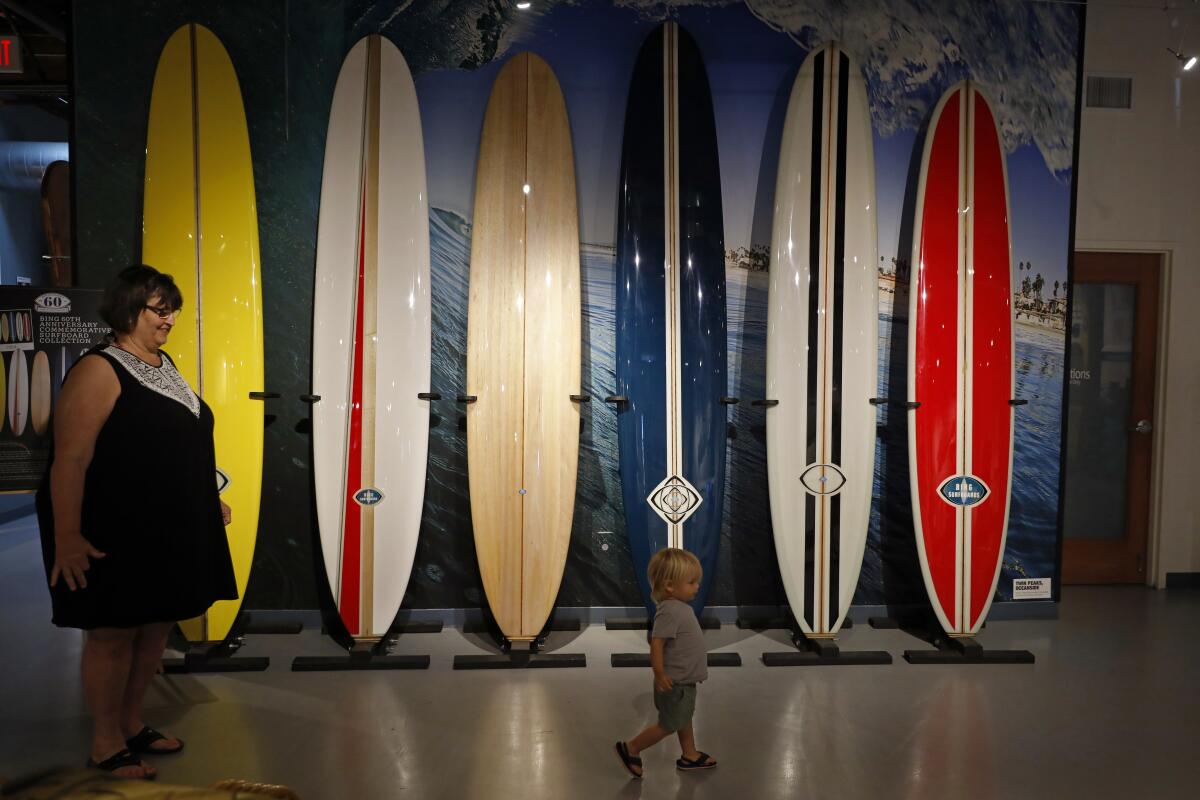
Oceanside
A classic beach town that’s gotten a new vibe over the past few years, Oceanside is ready for exploring.
The community’s legacy has been shaped by its proximity to the Camp Pendleton Marine Corps Base, which fostered its reputation as a military town. And like many of the cities along the Pacific Ocean coast, surfing and surf culture has played a big part in the town’s growth.
You’ll find the world-famous California Surf Museum here, a treasure trove of surfing memorabilia, surfboards, media archives and exhibits. In recent years Oceanside has established itself as a worthy dining destination with trendy restaurants, breweries and bars. Less than a two-minute walk from the museum, you’ll find local favorite Orfila Tasting Room & Kitchen, which has a robust selection of wines and an impressive menu of small plates, flatbreads and pastas.
Another can’t-miss spot and a favorite of travelers is the 101 Café, established in 1928 and the oldest cafe on historic Highway 101. The ’50s style diner serves breakfast all day and features classic fare such as patty melts, but also new dishes like avocado toast for all the hipsters, too.
Sadly, there was a fire on the historic Oceanside Pier last Thursday and that area remains closed.
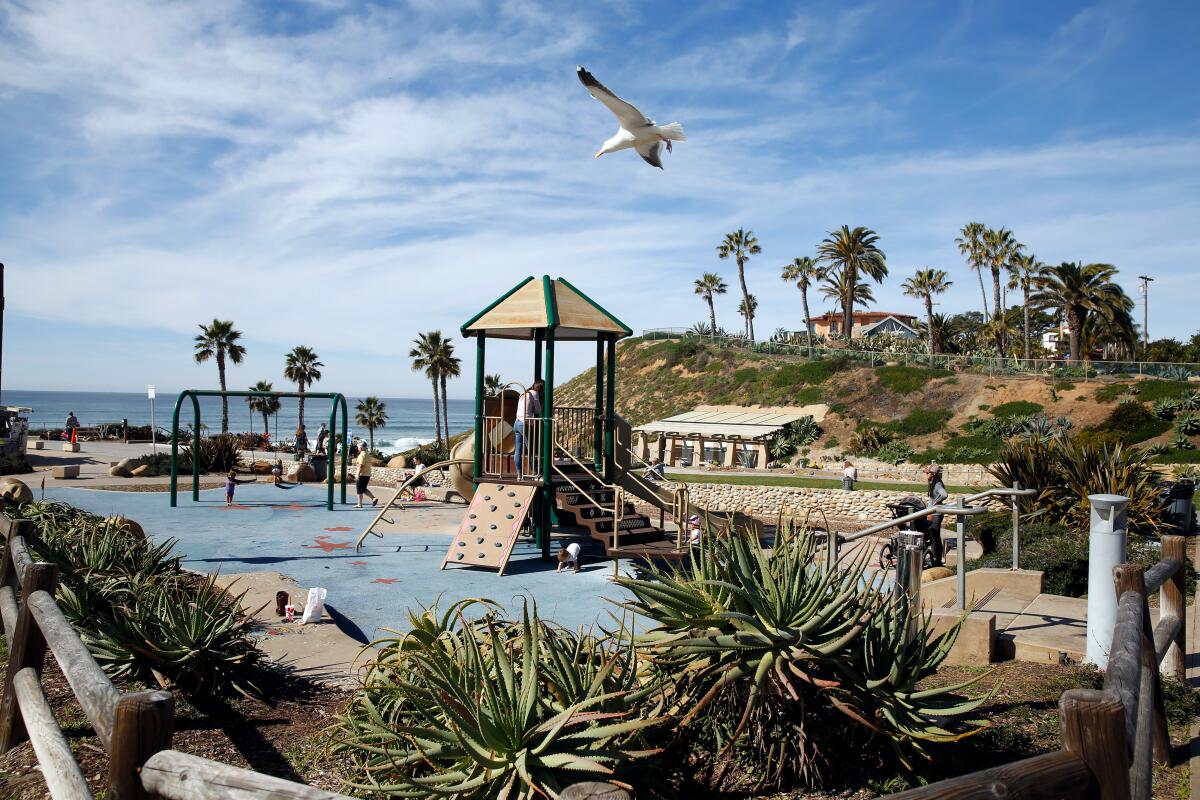
Solana Beach
Located along the coastal bluffs that overlook the Pacific Ocean, Solana Beach is a lively beach town with an artsy vibe. Anchoring the town is the main beach, Fletcher Cove — also known to the locals as Pillbox — named after Colonel Ed Fletcher, one of the founders of the town in the early 1920s. The Solana Beach station is also one of my favorites: Designed by architect Rob Wellington Quigley, whose firm is known for its environmentally sustainable structures inspired by local history, the station is modeled on the Quonset hut, a structure used by the U.S. Army.
Once you leave the station, across the street is the entrance to the Cedros Avenue Design District, made up of a few blocks of hip shops, galleries and cafes. One of the more famous venues in the district is the Belly Up Tavern, which has hosted some big names, such as The Red Hot Chili Peppers, Jimmy Buffet, Willie Nelson and the Rolling Stones. After you’re done cruising the district, grab a tartine at local favorite Madeline French Café & Bakery and head down to Fletcher Cove for a picnic with spectacular views.
One of Solana Beach’s hidden gems is the Coastal Rail Trail, a 1.5-mile trail that runs along the entire length of the city of Solana Beach. The trail, which starts in Oceanside, is lined with beds of colorful flowers and occasional art installations, such as the arch paying tribute to the Kumeyaay, a tribe of Indigenous people who were the early inhabitants of Solana Beach and other areas of San Diego County.
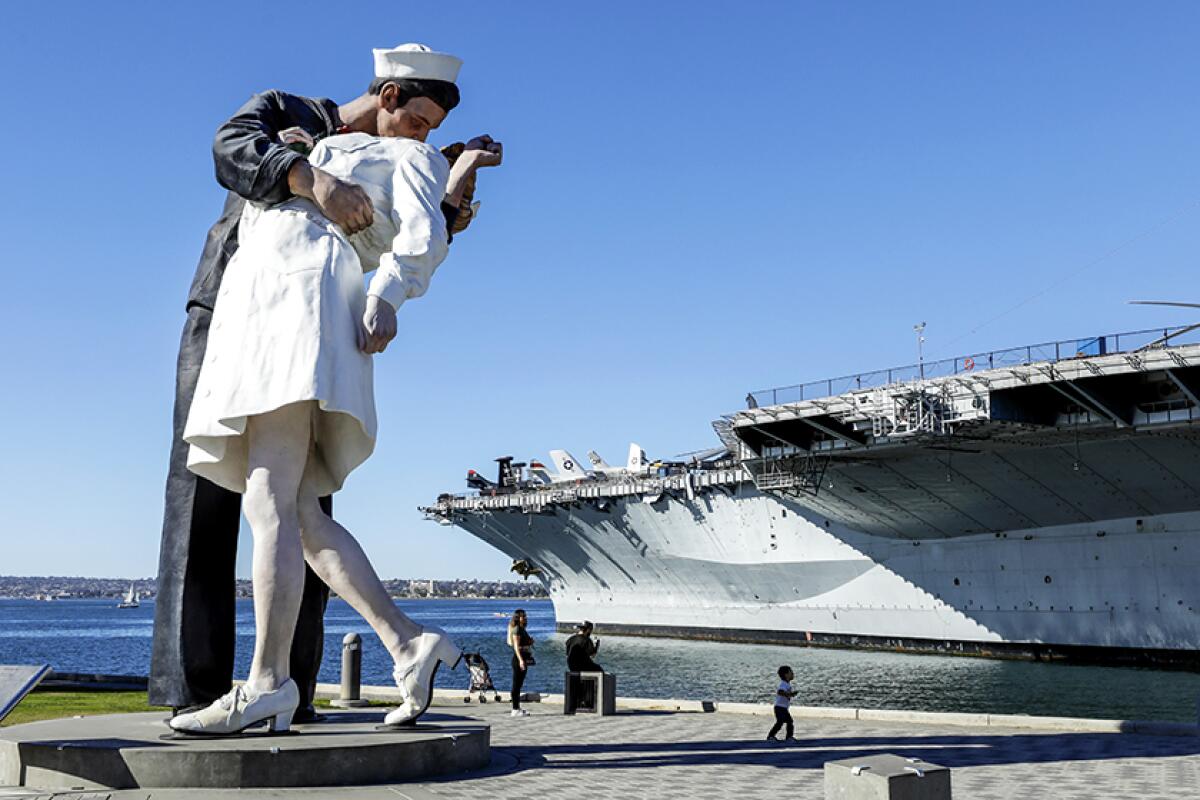
San Diego
You’ve driven to San Diego plenty of times, but have you done the trip by train?
There’s so much to do, see and eat within walking distance of the Santa Fe Depot station that the challenge will be deciding which direction to choose. Head toward the water and you can tour the super-popular USS Midway Museum or the Star of India. Nearby you can catch the Coronado Ferry to Coronado Island that’s loaded with restaurants, bars and shops and the luxurious Hotel Del Coronado. Or, landlubbers can just follow the path along the water, past the USS Midway and head to one of San Diego’s favorite family spots, Seaport Village. There you can grab some tacos and a tasty margarita at Puesto At The Headquarters (located in the former San Diego Police Headquarters), buy a few souvenirs, and maybe ride the historic carousel that was hand-carved in 1895 and only costs $5 per ride.
Sign up for The Wild
We’ll help you find the best places to hike, bike and run, as well as the perfect silent spots for meditation and yoga.
You may occasionally receive promotional content from the Los Angeles Times.



